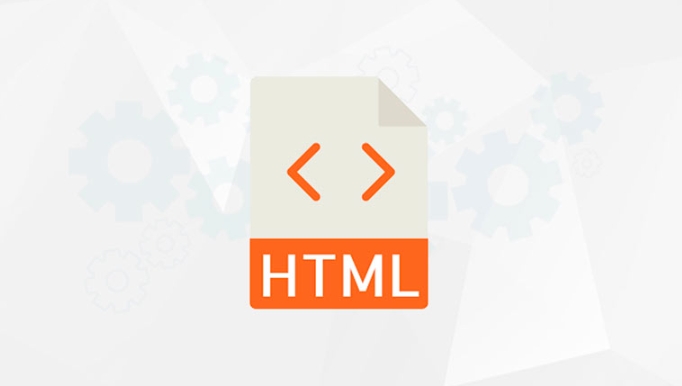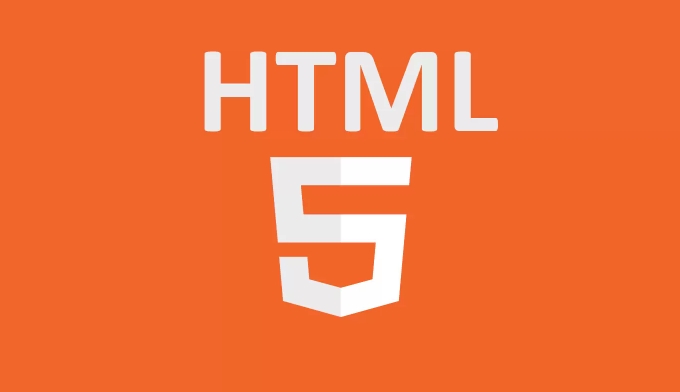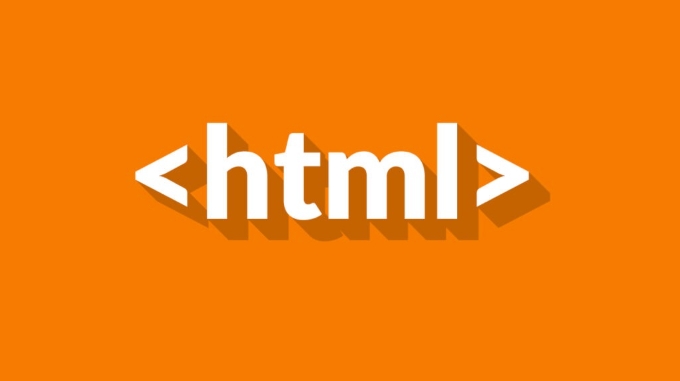Ruby annotations in HTML use the ruby container with rt for pronunciation and rp for parentheses. 1. The ruby tag holds the main text like a kanji character. 2. The rt tag gives its pronunciation or meaning. 3. The rp tag wraps parentheses around rt content for better display and fallback readability. Including rp improves accessibility, ensures consistency across browsers, and maintains clarity if CSS fails. Examples show how to structure annotations for single or multiple characters while preserving sentence flow. Using these tags enhances user experience, especially for language learners.

If you've ever seen small phonetic guides above or next to certain characters—especially in Japanese or Chinese websites—you're looking at ruby annotations. In HTML, the rp and rt tags work together with the ruby element to make this happen. They're not widely used, but they serve a very specific and helpful purpose, especially for language learners or multilingual content.

What ruby, rt, and rp do together
The ruby element is the container. Inside it, you place the main text (like a Chinese character or a Japanese kanji), and then use the rt element to define its pronunciation or meaning. The rp tag is used to wrap parentheses around the rt content, mostly for browsers that do support ruby but might not fully style it without extra help.
Here’s a basic example:

<ruby> 漢 <rt>かん</rt> <rp>(</rp><rt>kan</rt><rp>)</rp> </ruby>
This would show the character "漢" with "かん" (its Japanese pronunciation) above it. If the browser doesn’t display ruby correctly, the rp tags help make sure the parentheses around "kan" show up nicely.
Why rp is still useful today
You might think that since most modern browsers support ruby, rp isn't needed anymore. But it's still a good idea to include it for a few reasons:

- Accessibility: Screen readers and older devices might interpret the ruby structure differently. The parentheses help separate the annotation from the main text, making it easier to understand.
- Fallback readability: If your site’s CSS breaks or someone is using a very basic browser, the
rptags ensure the pronunciation guide doesn’t just show up out of nowhere—it’s clearly marked with parentheses. - Consistency: Some browsers automatically add parentheses, while others don’t. Using
rpgives you control over how it looks everywhere.
So even if it feels a bit old-school, including rp is a small step that improves the user experience across different devices and setups.
How to use them in practice
When writing ruby annotations, structure matters. Here’s a pattern you can follow:
- Always wrap everything in a
<ruby>tag. - Place the main character or word first.
- Add
<rt>right after for the pronunciation. - Wrap the
rtwithrptags to include parentheses.
Here's a slightly more complex example:
<ruby> 明 <rt>めい</rt> <rp>(</rp><rt>mei</rt><rp>)</rp> </ruby>
This displays "明" with "めい" on top. If the ruby display fails, it shows "(mei)" next to the character.
And if you're annotating multiple characters together, just repeat the pattern:
<ruby> 學(xué)校 <rt>がっこう</rt> <rp>(</rp><rt>gakkou</rt><rp>)</rp> </ruby>
This works well for inline annotations without breaking the flow of the sentence.
Final thoughts
Using rp and rt inside a ruby block isn't complicated, but it does make a real difference in how your content is understood—especially by language learners or readers unfamiliar with certain characters. It’s a small detail, but one that improves accessibility and clarity across platforms.
That’s basically it. Not flashy, but definitely useful when you need it.
The above is the detailed content of HTML `rp` and `rt` for Ruby Annotations. For more information, please follow other related articles on the PHP Chinese website!

Hot AI Tools

Undress AI Tool
Undress images for free

Undresser.AI Undress
AI-powered app for creating realistic nude photos

AI Clothes Remover
Online AI tool for removing clothes from photos.

Clothoff.io
AI clothes remover

Video Face Swap
Swap faces in any video effortlessly with our completely free AI face swap tool!

Hot Article

Hot Tools

Notepad++7.3.1
Easy-to-use and free code editor

SublimeText3 Chinese version
Chinese version, very easy to use

Zend Studio 13.0.1
Powerful PHP integrated development environment

Dreamweaver CS6
Visual web development tools

SublimeText3 Mac version
God-level code editing software (SublimeText3)

Hot Topics
 Applying Semantic Structure with article, section, and aside in HTML
Jul 05, 2025 am 02:03 AM
Applying Semantic Structure with article, section, and aside in HTML
Jul 05, 2025 am 02:03 AM
The rational use of semantic tags in HTML can improve page structure clarity, accessibility and SEO effects. 1. Used for independent content blocks, such as blog posts or comments, it must be self-contained; 2. Used for classification related content, usually including titles, and is suitable for different modules of the page; 3. Used for auxiliary information related to the main content but not core, such as sidebar recommendations or author profiles. In actual development, labels should be combined and other, avoid excessive nesting, keep the structure simple, and verify the rationality of the structure through developer tools.
 What are the essential HTML elements for structuring a webpage?
Jul 03, 2025 am 02:34 AM
What are the essential HTML elements for structuring a webpage?
Jul 03, 2025 am 02:34 AM
The web page structure needs to be supported by core HTML elements. 1. The overall structure of the page is composed of , , which is the root element, which stores meta information and displays the content; 2. The content organization relies on title (-), paragraph () and block tags (such as ,) to improve organizational structure and SEO; 3. Navigation is implemented through and implemented, commonly used organizations are linked and supplemented with aria-current attribute to enhance accessibility; 4. Form interaction involves , , and , to ensure the complete user input and submission functions. Proper use of these elements can improve page clarity, maintenance and search engine optimization.
 Implementing client-side form validation using HTML attributes.
Jul 03, 2025 am 02:31 AM
Implementing client-side form validation using HTML attributes.
Jul 03, 2025 am 02:31 AM
Client-sideformvalidationcanbedonewithoutJavaScriptbyusingHTMLattributes.1)Userequiredtoenforcemandatoryfields.2)ValidateemailsandURLswithtypeattributeslikeemailorurl,orusepatternwithregexforcustomformats.3)Limitvaluesusingmin,max,minlength,andmaxlen
 How to group options within a select dropdown using html?
Jul 04, 2025 am 03:16 AM
How to group options within a select dropdown using html?
Jul 04, 2025 am 03:16 AM
Use tags in HTML to group options in the drop-down menu. The specific method is to wrap a group of elements and define the group name through the label attribute, such as: 1. Contains options such as apples, bananas, oranges, etc.; 2. Contains options such as carrots, broccoli, etc.; 3. Each is an independent group, and the options within the group are automatically indented. Notes include: ① No nesting is supported; ② The entire group can be disabled through the disabled attribute; ③ The style is restricted and needs to be beautified in combination with CSS or third-party libraries; plug-ins such as Select2 can be used to enhance functions.
 Implementing Clickable Buttons Using the HTML button Element
Jul 07, 2025 am 02:31 AM
Implementing Clickable Buttons Using the HTML button Element
Jul 07, 2025 am 02:31 AM
To use HTML button elements to achieve clickable buttons, you must first master its basic usage and common precautions. 1. Create buttons with tags and define behaviors through type attributes (such as button, submit, reset), which is submitted by default; 2. Add interactive functions through JavaScript, which can be written inline or bind event listeners through ID to improve maintenance; 3. Use CSS to customize styles, including background color, border, rounded corners and hover/active status effects to enhance user experience; 4. Pay attention to common problems: make sure that the disabled attribute is not enabled, JS events are correctly bound, layout occlusion, and use the help of developer tools to troubleshoot exceptions. Master this
 Configuring Document Metadata Within the HTML head Element
Jul 09, 2025 am 02:30 AM
Configuring Document Metadata Within the HTML head Element
Jul 09, 2025 am 02:30 AM
Metadata in HTMLhead is crucial for SEO, social sharing, and browser behavior. 1. Set the page title and description, use and keep it concise and unique; 2. Add OpenGraph and Twitter card information to optimize social sharing effects, pay attention to the image size and use debugging tools to test; 3. Define the character set and viewport settings to ensure multi-language support is adapted to the mobile terminal; 4. Optional tags such as author copyright, robots control and canonical prevent duplicate content should also be configured reasonably.
 Debugging common HTML validation errors.
Jul 03, 2025 am 02:41 AM
Debugging common HTML validation errors.
Jul 03, 2025 am 02:41 AM
When encountering HTML verification errors, you must first clarify the problem and correct it according to the specifications. 1. When the required attributes are missing, the src and alt and a href of img should be completed; 2. When the tag nesting is incorrect, the structure should be clarified and the tags should be closed correctly to avoid confusion in nesting block-level elements; 3. When using invalid or discarded tags, you should refer to the MDN document to replace it with modern writing methods, such as replacing center and font with CSS; 4. When character encoding problems, add metacharset="UTF-8" and ensure that the file is saved in UTF-8 format to solve it.
 How to associate captions with images or media using the html figure and figcaption elements?
Jul 07, 2025 am 02:30 AM
How to associate captions with images or media using the html figure and figcaption elements?
Jul 07, 2025 am 02:30 AM
Using HTML sums allows for intuitive and semantic clarity to add caption text to images or media. 1. Used to wrap independent media content, such as pictures, videos or code blocks; 2. It is placed as its explanatory text, and can be located above or below the media; 3. They not only improve the clarity of the page structure, but also enhance accessibility and SEO effect; 4. When using it, you should pay attention to avoid abuse, and apply to content that needs to be emphasized and accompanied by description, rather than ordinary decorative pictures; 5. The alt attribute that cannot be ignored, which is different from figcaption; 6. The figcaption is flexible and can be placed at the top or bottom of the figure as needed. Using these two tags correctly helps to build semantic and easy to understand web content.






